|
“Keep on Keeping
on” with Exactrix Ultra Endurance 1890, 1895 and 1990 Single Disc
Seeders.
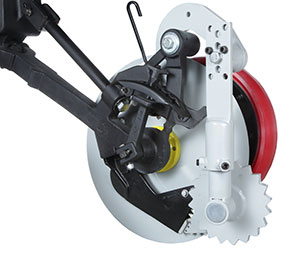
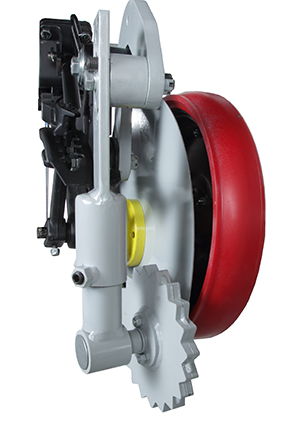
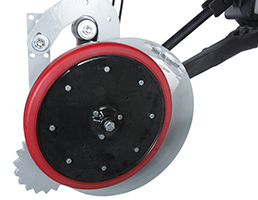
Ultra Endurance 1890,
1990, 1895. Banding deeper at 4.5 inch depths with exceptional wear
life.
A.
Adjustable 20 point closing angle. Run the closing wheel straight or
angled. Get the right closure by changing the tow angle.
B.
Certain soil types require adjustable depth Exactrix closing wheels.
The closing wheel can be adjusted vertically with the telescope
shaft.
C.
Adjustable front to rear closing point in steep hill sides. Allows
the closing point to be moved immediately along side the Series 4.47
wing injectors. Closes seed rows from the side with immediate seal
closure of the slot. A powerful tool for the Wing Injection of
Exactrix NH3.
D. The
Exactrix banding boot runs in the shadow. Series 3.5 banding boot
with carbide steel slipper foot with double height adjustments (6
total).
E. Polyurethane depth wheel out lasts standard Deere rubber semi-pneumatic
tires by 5 times in soybean stubble.
F.
Yielder Manganese Steel Blades offer more wear life as compared to
standard Deere blades at 3/16 x 18 inch. The Yielder blades are
available in Manganese Steel, Single edged with exclusive extreme
edging of 3/8 x 19.6 diameter for banding only openers, and 5/16 x
19.1 diameter or seed openers.
G.
Steel Hubs allow the openers to penetrate to 4.5 inch depths.
Standard Deere bearings and seals are used. Bolts are 1/2 inch
stainless steel.
H.
Closing wheel diameters in 8, 10 and 12 inch. Also laminated in 8/10
and 10 x 12. All with 45 degree angle point loading for mud clean
out.
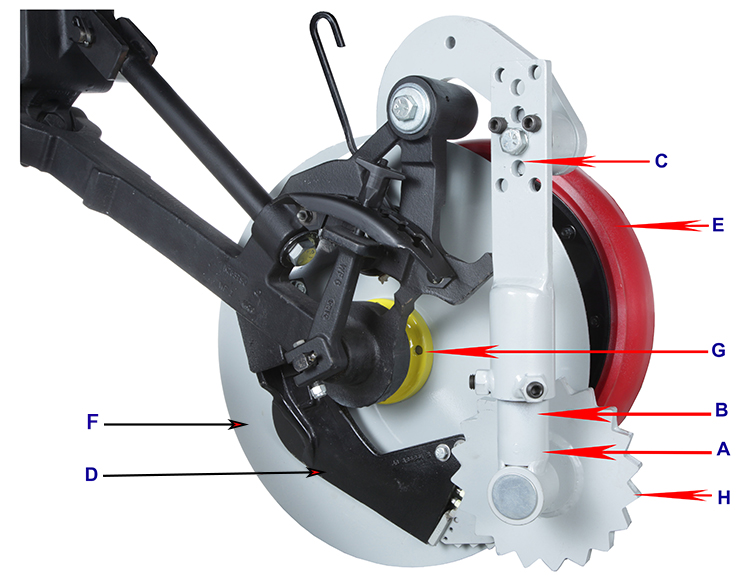
Most owners of Deere 1890/1895 single disc
drills have a great opportunity to bring more bushels to the elevator
every year.
Yielder drills
often outperform Deere 1890’s by 20 bushels per acre at Walla Walla,
Washington. That is a lot of money in today’s economics.
The first
Yielder drills are now over 31 years of
age and they still win the yield contest in winter wheat. So lots of
bushels are lost by the Deere 1890 due to poor seed placement or
seeding too fast for conditions. For certain
young farmers prefer Yielder Drills due to their excellent
reputation for full yield potential, seeding and application
uniformity.
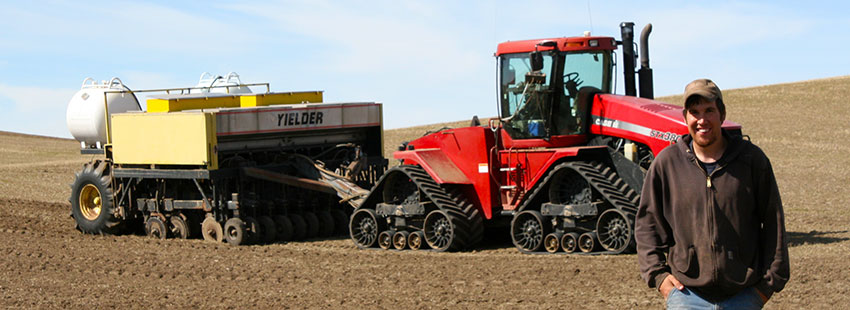
Some of the
single disc drills released are limited to certain soil types, or may
have some type of seed delivery problem that the engineers knew
nothing about when the machine was released. Furthermore, many of the
single disc machine designs were based on Federal Crop Farming of
the last 25 years. Some single disc machines are not built for
highly persistent, and consistent yield, they are non-durable price
point machines that are purposely designed to meet a broad but
certain segment of the no-till single disc market.
Case SDX
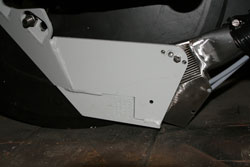
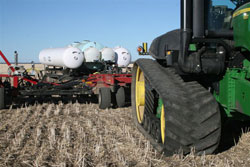
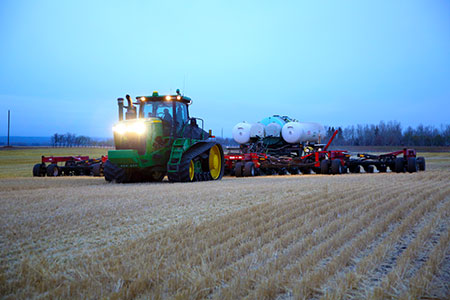
Case SDX Review
HERE
The Case SDX is a good example of a
single disc seeder that needs help outside the machines area of
development. New seed boots and several updates are now available
for the SDX which expands the machines applicable market.
EXACTRIX SDX Winter Wheat
or
www.exactrix.com/KD.htm
provide information on the Case SDX.
Case 500 and Case 500T
Precision Disc Seeder. Fall 2013 release.
Get the
engineering review HERE
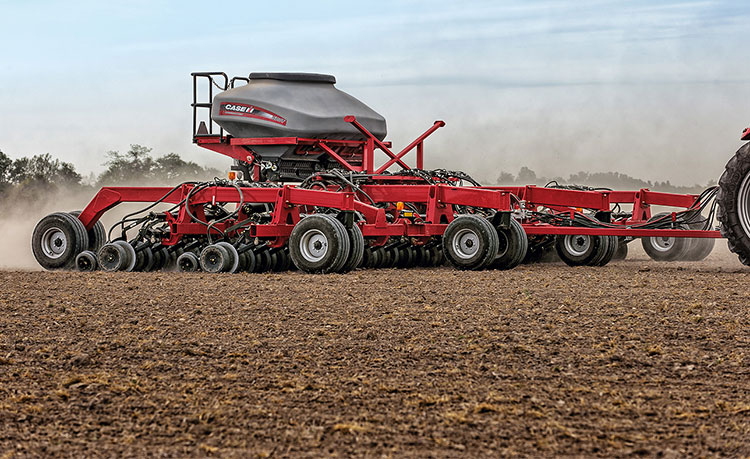
CASE 500T
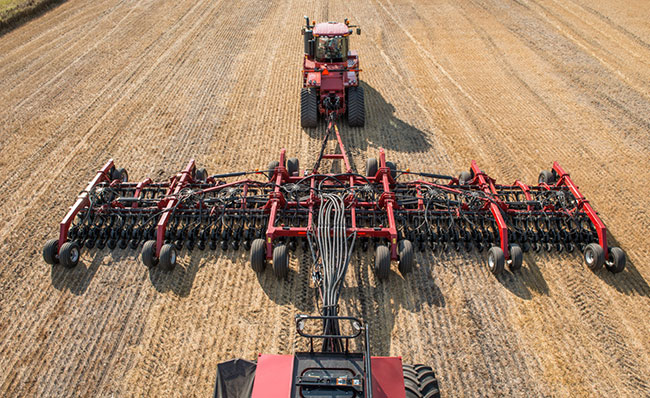
CASE 500
The Case 500 T can also
be utilized and a single disc, No-tillage banding tool bar.
TAPPS and TAPPKTS can be banded deep.
Triplex Injection allows
up to three different nutrients to be delivered simultaneously.
Quickly change from
seeding mode to banding only mode.
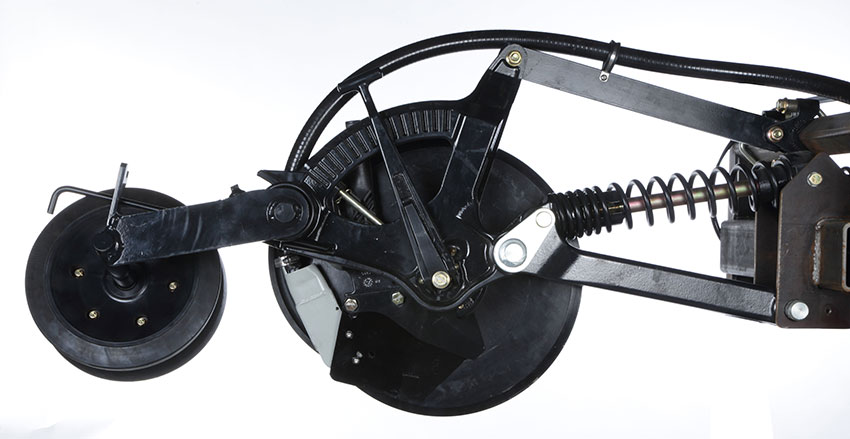
High
Speed, No-tillage Deep Banding with Exactrix Triplex injection of
TAPPS and TAPPKTS.
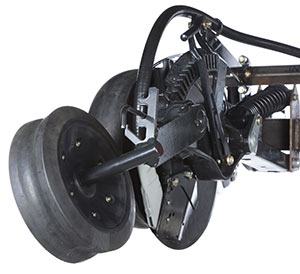
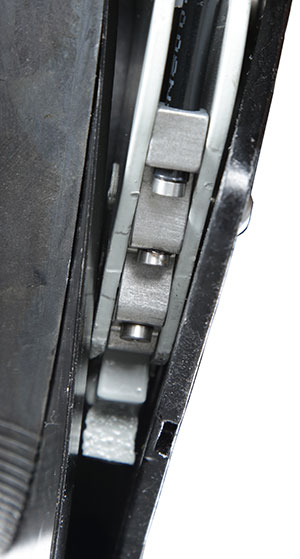
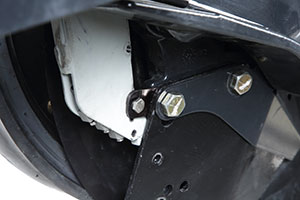
Storage position when seeding.
Case Exactrix Wing
Injection or CEWI. Seeding and Wing Injection of APP/ATS/KTS and
deep banding of NH3, 10-34-0, 12-0-0-26S and 0-0-25K-17S.
For Mustard, Canola and
Flax producers can now shallow seed and allow liquid fertilizer
application outside the seed row for sensitive germination crops
such as Canola. Canola is sensitive to seed row N and S, and wing
injection is safe.
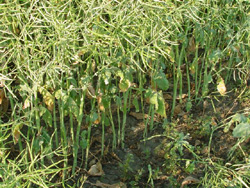
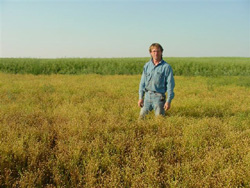
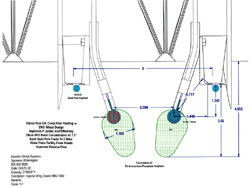
Soybeans on high soil pH.CEWI is ideal for Soygreen®.
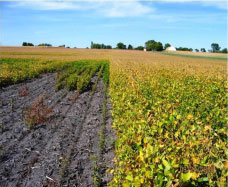
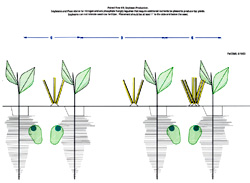
Soybeans can be fertilized
with Iron Chelated Soygreen® to overcome Iron Chlorosis. A very
critical method is now available in VRT seeding and producers can
now raise soybeans on high pH soils. Wing Injection allows Soygreen®,
A Double Chelated Iron to be placed outside the germination zone, but
close to the seminal hair roots.
In heavy residue, seed placement allows NH3 to be applied, and
TAPPKTS can be applied for such crops as Milo, Sunflower, Triticale,
HRW Wheat, and SWW Wheat.
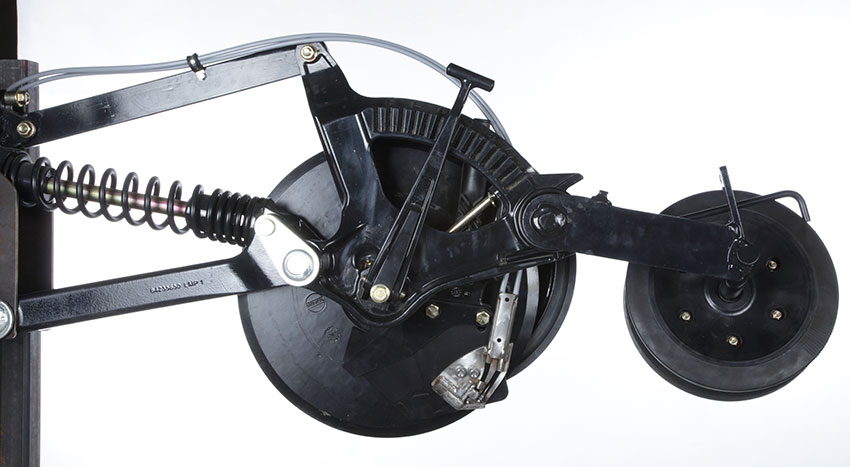
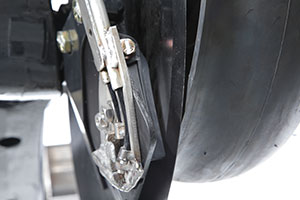
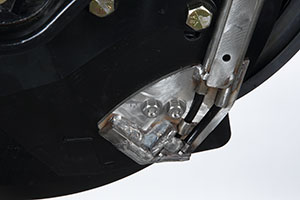
CEWI, Case Exactrix
Wing Injection.
Here are the options for
the Case 500 and 500T precision disc seeder.
1. High Speed, No-tillage,
Banding Deep in Triplex injection. Formulating TAPPS, TAPPKTS and
Fulvic acid at 5 inch depths.
Usually on the back gang
only with 7.5 inch drills producing deep bands on 15 inch centers.
32 openers on 60 feet.
10-inch banding centers
will produce the highest yields in pre-plant banding for small
grains. Canola seedings can be placed on top of the bands in an
index seeding approach. 72 openers on 60 feet.
Mounts inside the scraper.
$225.ea.
2. Case Exactrix Wing
Injection CEWI for deep bands and side banding when applying
10-34-0, 12-0-0-26S and and 0-0-25-17S. Banding deep at seeding
depths or seeding shallow with liquid fertilizer to the side of the
seed row, or side banded in a non-toxic location, applying TAPPS
and TAPPKTS in pre-plant and single pass.
Mounts along side the
scraper. $275. ea.
Drills set up 7.5 inch are
paired to share the back gang with 15 inch centers set up wing injection.
32 openers on 60 feet.
Drills set up 10 inch band
on 10 inch across the machine width. 36 openers on 60 feet.
3. For Deep Banding,
Yielder Manganese Steel blades at 5/16 x 22 and 3/8 x 23 in extreme
double edge and back edge. The larger diameter Yielder blades can
also be used for seeding with Case Exactrix Wing Injection.
Yielder Manganese Steel
blades work well in rock, as wear life is extended at least 5 times
over carbon blades.
5/16 x 22, $225.
3/8 x 23, $327.
The Deere 1890 is
a tillage, minimum till and No-till drill that has had good success
but is marginally applied in many No-till conditions. The 1890 is a
machine that needs improvements to make it better about 70% of the
time. In fact many problems exist with the machine that owners are
simply not aware of. One big factor is adequate weight.
Side Bar Click Here
For Additional Information On Owning And Operating Costs
After 14 years of
exposure to the 1860 and 1890 with Exactrix injection systems, Exactrix engineers have discovered several 1890 problems that can
be easily fixed. Many producers are not aware of these problems.
Why and how did
Exactrix engineers and owners discover these problems?
Producers with
Exactrix Wing Injection systems discovered the Deere 1890 problem.
When the openers do not properly engage the soil, a small amount or
about 1% to 5% of NH3 is lost. This immediate loss is reported
almost always to Exactrix. An investigation begins.
Exactrix
engineers now understand why some 1890’s work better than others.
Especially troublesome are the 7.5 inch 1890’s and the very light
weight, non-durable, 1690, which is no longer recommended. The
10 inch 1890 at 40 feet has been a good performer and yet it can be
improved.
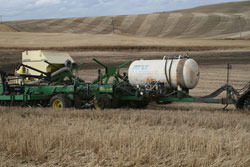
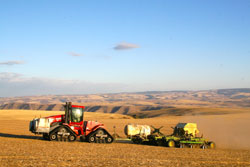
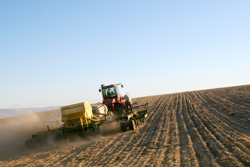
The 30 foot 1895 is the best machine for seeding with
World Class Yields, high net margin from Exactrix TAPPS.
Side Bar - 2 Click
Here For Additional Information On
Seeding With The 90 Series Opener
The best seeder
from Deere is the 1895, raising top, world class yields. This machine
is often utilized in the rolling Palouse and
Southern Idaho irrigated wheat production. The 1895 has additional
frame weight per opener when set up at 30 feet. The machine
penetrates tough soils better than any other Deere single disc
machine. Seeding in tough conditions at 2.5 inches is common with
the Deere 1895.
Opener bounce,
poor upkeep, and opener operation in heavy residue
needs to be further explained to owners. Deere activists need to
train operators on how to seed properly with the 1890. The
limitations of the 1890 are seldom explained to the new owner.
Typically, Deere
1890’s on 10 inch can seed much faster than 7.5 inch drills.
Opener bounce is a problem with narrow spacing drills. A 42
foot 1890 on 7.5 inch spacing has 68 openers and they bounce to the
point the machine seed placement is not acceptable at almost any
ground speed. Some producers expand the 1890 to 72 openers making
the problem of opener bounce even worse.
1890 seeding
No-till…Reviewing the 10 inch 1890.
The 10 inch
version has 52 openers at 43 feet and the machine needs more weight.
A 10 inch 40 foot
1890 has 48 openers at 409 pounds per opener.
The 50 foot, 10
inch version has 583 pounds per
opener.
And 60 foot 10
inch has 555 pounds per opener.
The 60 foot 7.5
inch drill has 458 pounds per opener…
A 60 foot 1890 on
7.5 inch spacing must add 97 pounds per opener to seed like a 10
inch machine.
Therefore, 96
times 97 is 9,312 pounds of additional weight that must be added just to
seed like an 1890 on 10 inch.
Reference Deere Charts from their 2011
brochure at
www.JohnDeere.com
The producer
said, “Make it seed like a Yielder”.
Yielder drills
produce the highest dryland yields in North American agriculture
right to the top of the yield potential in winter wheat. The
machines are capable of producing 800 to 1,200 pounds per opener all
day long, plus the opener down pressure can be adjusted from the cab
to match the seeding speed. Two other major factors make the Yielder
Drill difficult to outcompete for yield, since the machine is not a
price point machine, it is a maximum yield machine.
Major Changes to
improve the 1890 opener performance.
1.
Remove the Free Link.
1D2161, Drop the tillage aspect of the drill. All the openers need
to engage with positive down pressure in rolling terrain, such
as terraces or steep slopes.
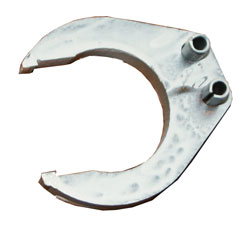
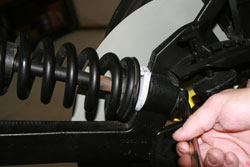
2.
Add
Frame weight evenly across the frame of the 1890 or 95. Add at
least 10,000 pounds. Use wheel weights in the center frame
corners. Use tractor weights at the back
to the center of the frame.
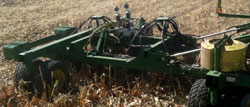
3. Change
the hydraulic cylinder size to 4 inch diameter.
Common SAE 4 inch cylinder, 8 inch stroke, $250., source locally.
Typically 6 to 9 cylinders
must be changed.
4. Remove
the Deere patented hydraulic pressure compensation valve
and install the X-16 Accumulator Ride Control. Allow the
opener pressure to be changed at the cab
by the operator. The X-16 ride control does not constantly consume
10 gallons per minute of hydraulic flow. The accumulators
are charged in ranges allowing each cylinder to respond
instantly. Electronic control of the opener ride is possible from
the tractor cab. 1D2191 Hydraulic Group.
1D2192 with electronic feed back and a plc performance loop.
Major
Changes to improve the 1890 endurance and opener performance.
Increase tractor seat time 4 to 5 times between maintenance events.
5. Change
the coulter blade diameter, thickness and hub strength.
Two choices are available.
Choice 1. Seeding and banding, wing injection 19.1 x 5/16 single
edged 1.25 inch. Yielder Manganese blades inclusive, steel hub design
with ½ inch hub
bolts. 1D2195.
Choice 2. Banding only, typically 19.6 x 3/8 single edged 1.5 inch
Yielder Manganese blades inclusive, steel hub design with ½ hub
bolts. 1D2196.
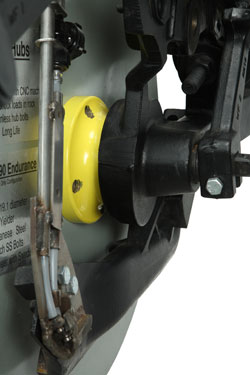
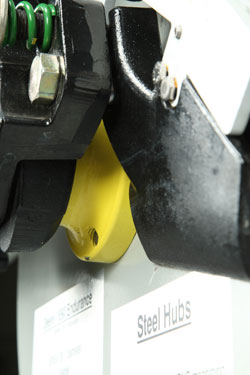
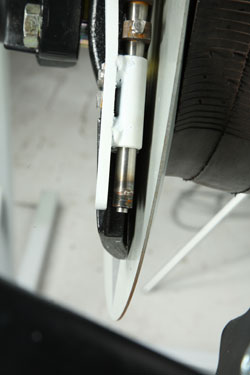
6.
Install carbided seed boots,
tripling the wear life of the standard boot. 1D2212,
7.
Install Martin 20 point closing wheels,
point loads the closing and
removes opener load.
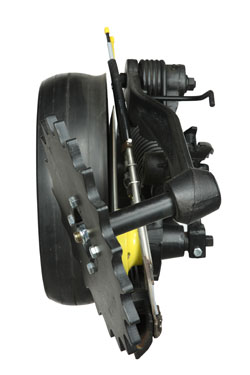
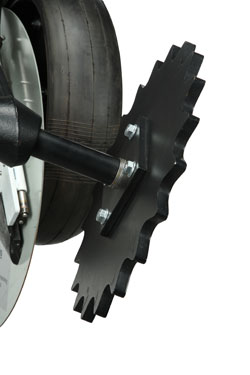
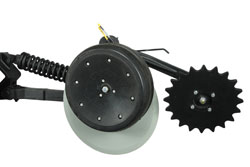
8. Install
Martin 2,3/4 in. heavy duty depth wheels; reduces opener bounce,
leaves more standing stubble, and appears to be more durable when
sourced from Martin.
Changes that
improve seeding.
9. Install
Needham seed tabs.
10. Install
the Needham narrow firming wheel.
11.
Install Ag Pro seed metering system for best seed delivery and
uniformity. A lower box can be added to the Deere 1990; best metering
system for high value seed that is GMO.
Any 1890 can be made into a 1990 when the Ag Pro seed box is added.
Great tool for Garbanzo Beans, the Ag Pro Meter.
12.
Air
Brakes from Needham relieve air pressure for improved seed delivery.
13.
Install the latest 1910 Deere towers with orifice coefficient
design.
14.
Consider Needham seed splitters for Deere Towers.
15.
Set
up the down pressure circuit to produce 600 pounds per opener and
“go to school” and seed deeper. Seed at least 2.5 inches in heavy
residue conditions. The Deere 1890 opener allows deeper
seeding in heavy residue with the unique narrow seed firming wheel
and the 20 point Martin closing wheel
design. Infrared light can penetrate much deeper when the seed is
not packed from the soil surface. The Deere 1890 works
very well when the seed is delivered into the “Buffered
Zone” at the 2.25 inch to 2.5 inch depth. Do not add row
cleaners. Producers have best results
with deeper seedings in heavy residue. The opener can do it. A
review of the combine spreading should be carried out each harvest
season.
Taking Yield to
the Limit.
16.
Install Exactrix Wing Injection and apply TAPPS.
Apply TAPPS with Humic Acid, or apply TAPPKTS with Humic acid and
micros. $275 per opener.
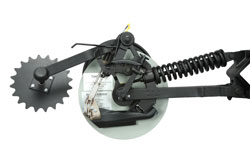
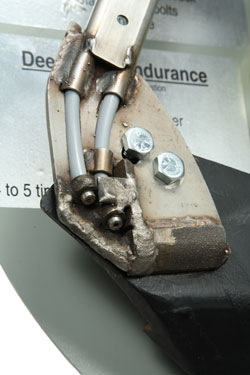
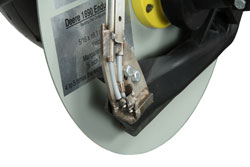
17.
Install banding-only Series 4 scrapers with Exactrix TAPPS
formulator tubes.
Two-pass the nutrient application. Band
in the fall for spring crops. Band into growing wheat or sod in the
late fall and early
spring. $150 per opener.
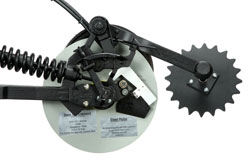
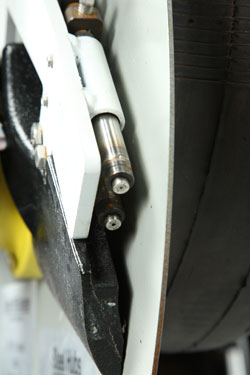
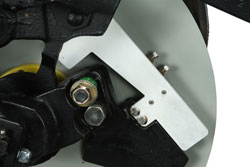
In
steep slopes, Series 3.5 is recommended. Series 4 is not recommended
for high yielding winter wheat and high yielding spring crop areas.
18.
Making the above changes will change the recommended seed
rate. Most likely the seed rate is now too high if the above adjustments
have been made. Since the germination and
emergence are more, uniform the seed rate will need to be adjusted with a
series of test plots. Once uniformity is
employed with near perfect seed depth, seeding at the proper seed
rate could easily pay for the entire drill and the all the above
changes.
19.
Exactrix will pay $1,000 for any test plot submitted under STEEP
criteria.
Operating the machine with the above improvements could improve the
operation so much that both nutrients and seed rates need to
be adjusted. Old techniques and rates may no longer apply. Some
producers could easily be beyond the
economic point of diminishing returns and on the back side of yield
curve.
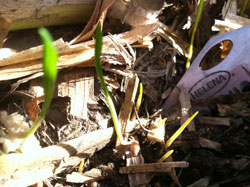
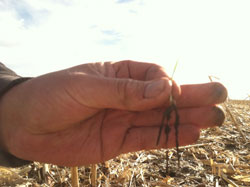
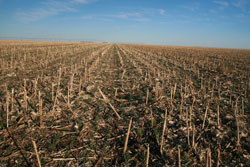
Typically
producers consider the Deere 1890 as a seeder. The 1890 is also a
good Pre-Plant Bander for corn production. The machines are set
up on 10,12, and 15 inch band spacing, or Exactrix wing injection is
used on 10 and 15 inch spacing. Also the 1890 can side dress
winter wheat at the lowest cost per acre. Lower owning cost is
realized since the same machine is covering up to 3 times more
acres. Large acre operators may have a dedicated single disc banding
tool bar. Smaller operators can use their 1890 to cover more acres in
a dual purpose utilization.
Lowering Banding
Costs, Increasing Ground speeds to 9 mph.
Banding into
heavy residue is much more effective when the 1890 can run 4 to 5
times longer between repairs, maybe as high as 60,000 acres with a
60 foot machine before repairs, thus lowering banding and fuel costs
to the lowest common denominator. Use the accumulator ride control
to set down-pressure from the cab.
No-tillage Deep
Banding….and
in all cases with the Ultra Endurance 1890, the new machine
design will go to 5 inch depth with virtually no soil disturbance in
very difficult soil conditions.
Review of the
1890 seeding at 7.5 inch and 6 inch, and the Fisher 1890, 42.5 foot
machine.
In 2011 at
Fisher, Minnesota, a 15 inch band spacing was implemented with the
7.5 inch 1890 drill
utilizing Exactrix Wing Injection on 34 rear gang openers. The front
gang was paired to the dedicated wing injection opener of the back
gang.
The 1890, 7.5
inch average rows were paired to 4/11 allowing sunlight to penetrate
into the canopy, resulting in off row light effect. The effectiveness of the machine was greatly improved. Both
seed rows received uniform nutrient without starving the non-wing
injected row. This arrangement was also utilized on Yielder Drills
using the NP opener in combination with the Swanson offset, leading
double disc opener or SOLDD. The single disc NP opener seeded and
banded and offset, leading double disc or SOLDD only seeded. This
Dual Opener arrangement (NP plus SOLDD) was considered by many
producers as the best possible compromise for all seeding
conditions.
The same Deere
1890 with Exactrix wing injection of 15 inch centers was utilized
for Pre-plant banding of TAPPS for sugar beets and corn, by raising
the front gang and banding to the maximum depth with the rear gang
only. Raising the front gang also added additional machine weight.
This particular
arrangement was further improved in the fall of 2011 by adding
Exactrix steel hubs and coulters to the back gang. The John Deere
Free Link was removed by adding spacers.
The Red River
Valley, Fisher 1890
was further improved by changing the hydraulic cylinders to 4 inch
diameter SAE, with the standard 8 inch stroke. The 2.5 inch and 3
inch cylinders were deleted since they cannot produce enough down
pressure at maximum operating pressure on the outside opener wings.
The 7.5 inch
drill can be adapted to Exactrix TAPPS by setting the machine up as
a single pass machine applying and seeding as paired row 4/11.
The 7.5 inch
machine can also be set up as single pass, and band on 15 inch row
spacing for winter wheat and crops, such as Winter Canola.
The 15 inch
banding arrangement with 19.1 inch coulters, steel hubs and larger
hydraulic cylinders, can be set up to side dress the established
winter crops in late fall or early spring.
The advantage of
15 inch band spacing with 7.5 inch row spacing is also observed in
establishment and fertilization of alfalfa, and high yielding winter
canola under center pivots.
Reviewing the
1895 at 30 feet, The Genesee 1895.
A Deere 1895
equipped with Exactrix TAPPS at Genesee, Idaho
has proven to be an admirable, high yielding machine because of
adequate machine weight when seeding and banding. In the spring of
2011, the 1895 was converted to Exactrix 19.1 inch x 5/16 inch
coulters with steel hubs. The experiment was carried out to improve
band depth, to improve endurance, and hopefully take a bit higher
yield as a result of the 5 inch banding capability.
Some of the field-wide averages with the 1895 exceeded 125 bushels per acre at the
dryland winter wheat harvest in 2011.
The Genesee 1895
weighs 185% more than a standard 1895. A standard 1890 weighs in
from the factory at 24,000 pounds. The Genesee 1895 weighs 42,000
pounds loaded, 18,000 more pounds than the standard 1895. With the
NH3 tank empty, the Ag-Pro equipped machine weighs 32,500 pounds.
The Genesee 1895
loaded can produce 777 pounds per opener with positive down pressure
on the wings. The seeder has 54 total openers with 36 seeding and 18
banding. The Deere banding openers MRB have been modified with
Exactrix steel hubs and Yielder manganese steel blades, allowing the
machine to produce superior economics in the range of 125 to 150
bushels per acre of winter wheat.
The reason for
the coulter blade change was the Deere factory 3/16 carbon blades
were not durable. The factory 3/16 carbon blades would bend and
deflect the cast iron hubs when operating on steep Palouse Hills.
The 3/8 carriage bolts would snap or the cast iron hub would break
when operating the Deere 1895 on 50% compound angle slopes. These
are tough conditions, requiring a belted 75 tractor such as a
Caterpillar Challenger for the 30 foot machine. The change to the
articulated 450 hp Case Quad track did not improve the MRB cast hub
breakage problem.
The discovery by
producer Eric Odberg was the larger 19.1 inch Exactrix Yielder
manganese steel blade produced superior performance on slopes,
plus the additional depth of penetration of the opener. In fact, the
band depth was observed at 5 inches as measured in soil slot in the
field conditions of spring 2011.
In the fall of
2011, the full force of the machine was utilized at 777 pounds per
opener to deep band and seed the winter wheat crop. The
conditions were difficult for sure with much improved performance for the operator.
The Exactrix hub
and coulter blade change was a major achievement. The Genesee 1895
did have improved slope stability. The Exactrix steel hub in
combination with the 5/16 Yielder coulter blade would hold the
machine on the hillside without damage to the soil or a slide out of
the machine.
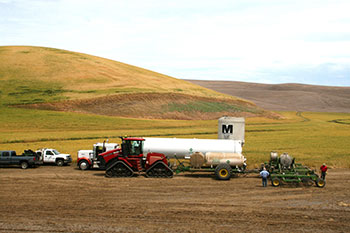

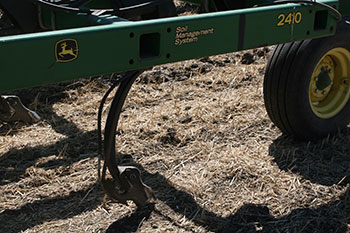
Shank Vs Single Disc |